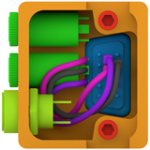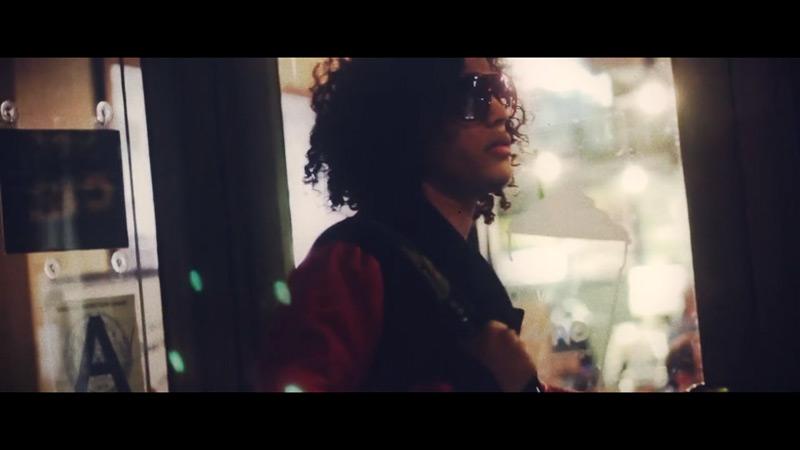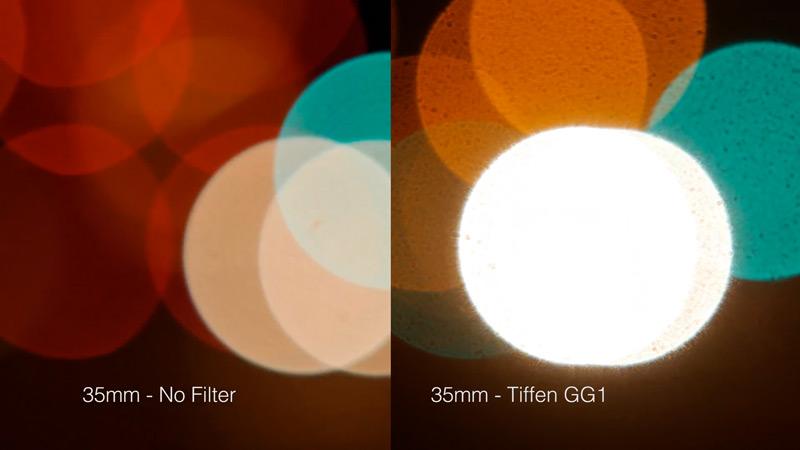-
Posts
200 -
Joined
Content Type
Profiles
Forums
Articles
Posts posted by shijan
-
-
shot with the hdtv/fx filter
this is some very very early work for me. I was so young In the game learning cinematography and grading lol
are there those green reflections, Zak Forsman talking about? i like them)
-
Zak, what you can say about ultra contrast filters? Are they affect bokeh look? I saw you try to sell them here and on your website. Are you use them a lot?
I don't have experience with this kind of filters but after about week of research i still would like to go for ultra contrast because i don't like a lot those halo and dreamy look all the way and don't see any problem to add it in post with plugins. But the low contrast is the different story.
-
looks like those glimmerglass filters add noise and grain to bokeh https://youtu.be/vurjvHz4dOI
-
I think I used a 1 and a 3 and found them both a bit heavy. They lift the shadows but it's similar to shooting log on a camera with a thin codec, you end up with an image that's not much better than the normal image because it's mostly just washing detail out and has worse gradations and tonality once graded back. Big shadow lift, not a huge highlight change. The Alexa has a smooth filter behind the lens (over the sensor) it seems that adds just a very subtle touch. More like glimmer glass.
Yes DSLR users use those filters for better codec handling but as so as i will use bmpcc raw files my concept will be to lift shadows with a contrast filter and than underexpose camera without crushing those lifted blacks to protect highlights (i saw someone do this trick on youtube with hd video camera and result was pretty nice). did you try this?
to process raw data i also use RPP app which is true 32 bit floating point and has better quality than resolve, so i think that poor gradations and banging is not a problem for this workflow.
btw i noticed glimmer glass filter too but still don't have time to check the differences from other diffusion-contrast Tiffens
-
A lot of Alexa's magic (and the film magic it's emulating) is halation/diffusion.
After further use of the ultra contrast, it alone isn't enough for me. The HDTV/FX filter might be the thing, but my wallet can't afford the hit.
Let us know how it goes.
Please tell us more about experience with Ultra Contrast filters! I thought to use them only for better dynamic range and all other stuff like halos, blooming and smoothing do in post. As so as they are rather expensive i plane to purchase one for soon but not sure which is best for all time use with bmpcc camera. Some people on RED forums calms that its too strong for regular usage, but for me number 1 seems for me more less universal solution for slight but same time visible shadows-highlights improvement.
-
Here is a 2015 test comparing different strengths of Ultracon, low con etc... Some of the filters look drastic, but If you open multiple browser windows side x side and pause the test on Clean, Ultracon, lowcon etc.. you can make a better comparison. Keep in mind small vs large viewing screens and different focal lengths change the strength of a filters look. I use Schnieder Digicon a bit, as it lowers highlights by adding black specs in the filter. As you can see in the test, it is almost like an optical log. I also have used Hollywood Blackmagic to take the digital edge off, but it isn't included in the test. Curious how it compares to Glimmer Glass? http://vimeo.com/116316115
Seems the video is password protected. Any chance to see it?
-
-
Looks like currently the best fixed NDs are Hoya PROND tested by CaptainHook http://www.bmcuser.com/showthread.php?6403-New-Hoya-ProNDs-Rolling-Report-Thread&p=97497&viewfull=1#post97497
another nice one is SLRMagic Vari ND tested by Brawley: https://vimeo.com/johnbrawley/review/106381581/6ae5f7095b also SLRMagic rumored to release soon a new version of their filter with better specs, additional ring and few different sizes.
-
I just bought the Meteor 5-1 17-69mm f1.9 zoom for my BMPCC... but i'm not really clear from the thread above about which M42-MFT adaptor is going to fit best... and where to get it from. The Rainbowimaging one mentioned above is no longer available. Here's some ebay options
any suggestions?
i hear it has 1mm difference in flange distance to classic M42mount
-
i find less expensive adapters http://rafcamera.com/en/adapters/kinor-16
-
tried dng converter RPP (raw photo processor) and it gives me a better and natural results in highlights than ACR. also i know that there is a MakeTiff free app from author of ColorPerfect plugin. it converts dng data to linear tiff files, maybe can be useful, but maybe not...
-
maybe this will help 25mm c-mount vignetting shootout http://forum.getdpi.com/forum/4-3rds-cameras/8410-25mm-c-mount-vignetting-shootout.html
-
i like the flexibility of this camera too. Dan, i can only ask you for better turning of highlights handling. i saw cineform samples from s 35 model (asian woman in the forest against the sun) and they handle highlights in more delicate way, because uses protune cineform curve i believe. another really nice idea that i can vote for is to implement e-mount to this camera because for this mount exists a tons of inexpensive adaptors to almost any lens. e-mount not so bulletproof as pl-mount but it takes more freedom to artists and more flexibility to camera system. also if the mount will bend or erased after years of intensive usage i think those simple metal ring can be easily replaced by user.
-
thanks for test Andrew. do you plane to test it in crop mode in future? very interested to see how it will work with 16 mm lenses against BMPCC and Panasonic crop mode, especially aliasing and frame area size comparison.
-
aliasing is here:

-
seems misprint, but where is the truth?
-
also nikon specs say 3082 vertical resolution (DxO calms even 3082) and AR1011HS sensor can do only 2712 http://s3.amazonaws.com/movies.dpreview.com/news/aptina/AR1011HS_flyer.pdf so it can't be old sensor in v2 and j3 cameras. or maybe we muddle up AR1410 and AR1011 sensors?
-
on Fuji X Pro 1 chart those curve pushed to its limit, but the curve shape stays same on various modes.
Andrew, can you post a link on Chipworks V2 teardown? i search their site same as others yesterday but didn't find any info about V2 or J3 cameras. All i find currently is DxO test of those cameras http://www.dxomark.com/index.php/Cameras/Camera-Sensor-Database/Nikon/1-V2, but its unknown how and in which modes they are measure dynamic range
and yes photographic or video mode is different, but i hope for some potential future budget cinema cameras with this sensor somewhere...
-
also here is a chart showing 16 and S16 circles vs AR1411HS coverage.
4620 x 3084 (Full sensor)
4096 × 2160 (4k)
3840 × 2160 (4K UHD)

-
some research:
first of all i also almost sure that v2 and j3 uses AR1411HS sensor.
here i find a photo of j3 sensor. as you see it design is different from sony sensors used in larger nikon cameras.
regarding Aptina website info AR1411HS has 79.0dB and older AR1011HS (used in j1 and v1) 66dB of dynamic range, so its pretty big difference.
but bad thing it that looks like some companies have a policy to limit sensor possibilities on consumer cameras to be able sell better professional models. look here, sony nex 5&6 and fuji series response curves are very film-like in highlights and its clearly seen on real photos. same time panasonic gh2&3 and nikon are tune sensor to burn highlights very hard.
dpreview has very useful charts regarding real life dynamic range of cameras but it is not tested v2 or j3 yet.

-
Hello everyone. Currently i developing a little DIY project and have an idea to implement Sony E-Mount to be able attach various adaptors for lens testing. E-Mount has short flange distance, its diameter big enough to fit any lens and there are tons of inexpensive lens adaptors on ebay.
But as so as it don't use clamping nut as pl-mount, IMS or b4-mount, i'm not sure how durable, rugged and precise this mount appears to be. I would like to to hear your personal opinion regarding usage of this mount in real life... Thanks!
-
ouch, my fault. so its lossless, same as big brothers are.
another issue that i see its a ergonomics: when you hold the camera grip it seems you always be able to accidentally push buttons.
-
sensor http://www.fairchildimaging.com/catalog/focal-plane-arrays/scmos/cis-1910f
seems blackmagic choose a not too friendly marketing way used in other big companies - make many niche not perfect cameras, instead of develop one perfect and good working one which can make peole happy.
BTW those compressed DNG from small camera is only 8 bit, so you stuck with low bit debth RAW or high bit depth RGB. but from other side its not so bad as non raw jpeg http://helmersworks.com/journal/2013/03/digital-negatives-dng-with-lossy-compression-is-it-worth-it/.mini HDMI is also pain as everyone know, and large SD cards are extremly pricy.
-






Tiffen Ultra / Low Contrast filters
In: Cameras
Posted
yea, its visible at sewing machine scene. its because tiffen don't use multi coated glass. maybe putting contrast filter under multi coated clear filter or under multi coated ND filter can disable those green reflections? also additional lens hood can help
here is one more example video